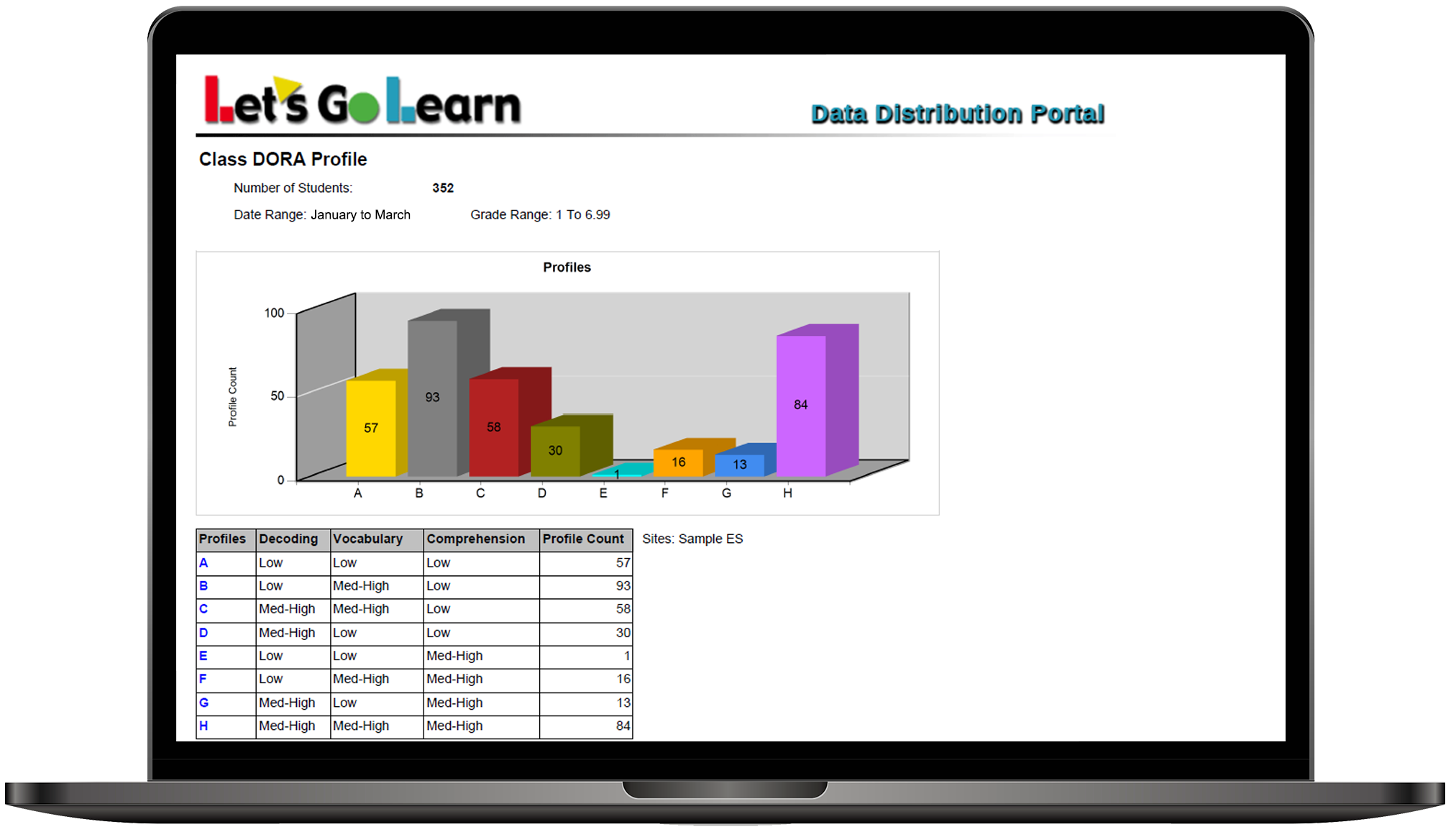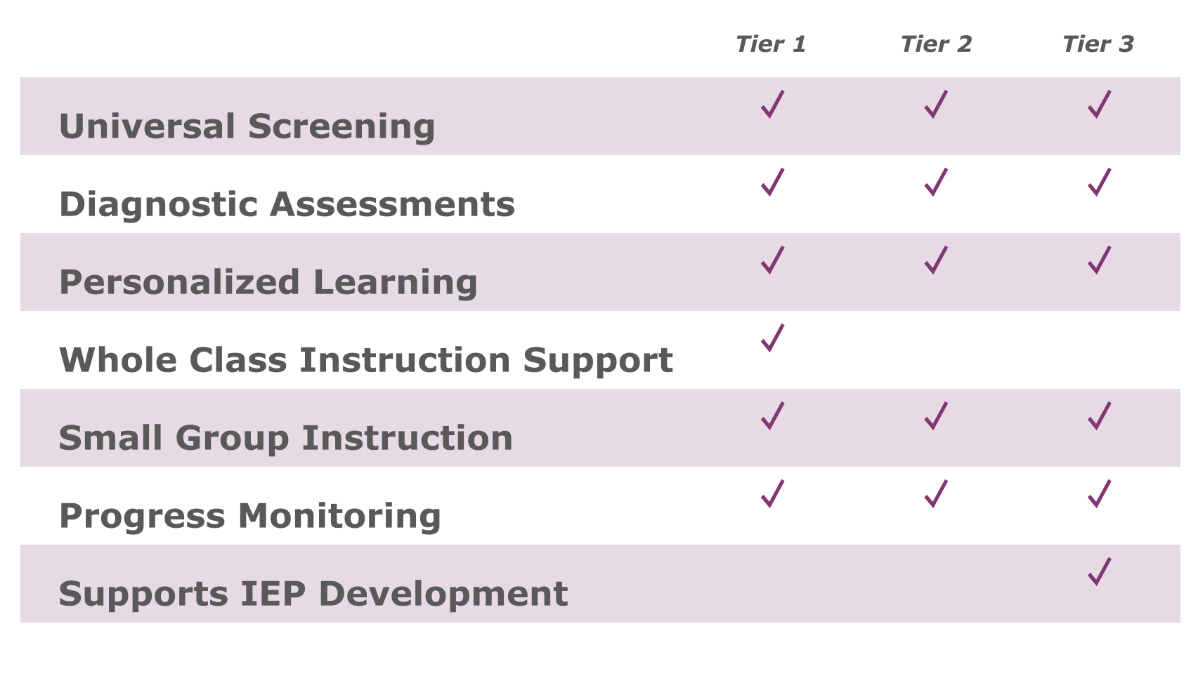Why is it important to collect and use data from various progress monitoring assessments throughout the year?
Teachers use a variety of progress monitoring assessments to gain insight into student progress and instructional needs. Diagnostic assessments are used at the beginning of the school year to see where students’ strengths and areas for improvement are. These assessments help teachers customize instruction to meet individual student needs. Throughout the year, formative assessments are used to collect ongoing data on student learning, allowing teachers to adjust their instruction to the needs of the student. They provide valuable information on student understanding and areas needing further instruction. Summative assessments, such as end-of-unit tests or final projects, are used to evaluate student learning at the end of a specific period of instruction. This article uses reading examples, but the same principles apply to math and other learning subjects. The results from these assessments can be used to help student progress and help guide future instructional planning.
Benefits of Using Data from Reading Assessments Throughout the Year
Using data from reading assessments throughout the year is important for teachers to be able to identify students’ strengths and weaknesses, track their progress, and make informed instructional decisions. These assessments provide insights into students’ reading skills, comprehension abilities, and growth over time. Utilizing data from reading assessments allows for early detection of reading difficulties, allowing teachers to intervene and provide support before these challenges become more significant.
Improved Student Performance
The first step in utilizing student performance data is to use the data to identify areas for improvement. This means looking for trends in student performance, like common misconceptions or areas where students are struggling. This will help to pinpoint specific areas that need targeted instructional strategies. Use the feedback from formative assessments and student samples to personalize instruction to meet the specific needs of the students. This might mean re-teaching certain concepts, giving additional practice opportunities, or offering alternative learning strategies for students who are struggling. One idea can be class brainstorming where everyone participates to solve the problem. As noted by renowned creativity expert Sir Ken Robinson at Iowa State University Center For Excellence in Learning and Teaching, ‘Brainstorming, a useful tool to develop creative solutions to a problem, is a lateral thinking process by which students are asked to develop ideas or thoughts that may seem crazy or shocking at first. Participants can then change and improve them into original and useful ideas. Brainstorming can help define an issue, diagnose a problem, or explore possible solutions and resistance to proposed solutions”.
After utilizing these strategies, it is important to evaluate their effectiveness. Use additional formative assessments to monitor student progress and make adjustments as necessary to support student growth and achievement. This might involve refining instructional strategies, providing additional support to individual students, or exploring alternative teaching methods.

A screenshot from Let’s Go Learn’s DORA reading assessment, showing how a large cohort of kids are doing in progress monitoring assessments.
Increased Teacher Effectiveness
By consistently monitoring student progress, teachers can identify areas where students may be struggling and determine whether their teaching methods are effective. This can lead to more targeted and personalized instruction, ultimately improving student outcomes and classroom success. A teacher may notice that a certain group of students are struggling with a specific concept. This information can be used for the teacher to provide additional support, re-teach the material, or seek input from colleagues on alternative instructional approaches.
More Accurate Diagnosis of Students at Risk
Multi-tiered systems of support (MTSS) are used to identify and diagnose students at risk for academic difficulties, behavioral challenges, or social-emotional concerns by providing a multi-layered approach to intervention and support. The MTSS framework involves three tiers: Tier 1 for universal support for all students, Tier 2 for targeted interventions for at-risk students, and Tier 3 for intensive interventions for students with the most significant needs.

Data-driven decision making and progress monitoring are components of MTSS because they allow educators to accurately assess students and provide targeted interventions. By collecting and analyzing data related to students’ academic performance, behavior, and social-emotional well-being, educators can identify patterns and trends, and make informed decisions about the appropriate level of support for each student. Progress monitoring allows educators to track the effectiveness of interventions and make adjustments as needed to ensure students are making adequate progress.
Greater Insights into the Learning Process
In order to gain greater insights into the learning process, it is important to utilize student growth data, assessment empowerment, and student goal setting. A valuable tool for understanding students’ position on their learning pathway is Let’s Go Learn. Let’s Go Learn offers a diverse range of products designed to cater to various educational needs and enhance the learning experience. Their adaptive learning solutions leverage cutting-edge technology to provide personalized learning paths for each student. These tools dynamically adjust to individual strengths and weaknesses, ensuring that students receive targeted instruction to address their specific learning requirements. The platform offers diagnostic assessments that help educators identify students’ proficiency levels and tailor instruction accordingly. With a commitment to fostering a positive and engaging learning environment, Let’s Go Learn’s products empower both educators and students to navigate the educational landscape effectively.


Leave A Comment